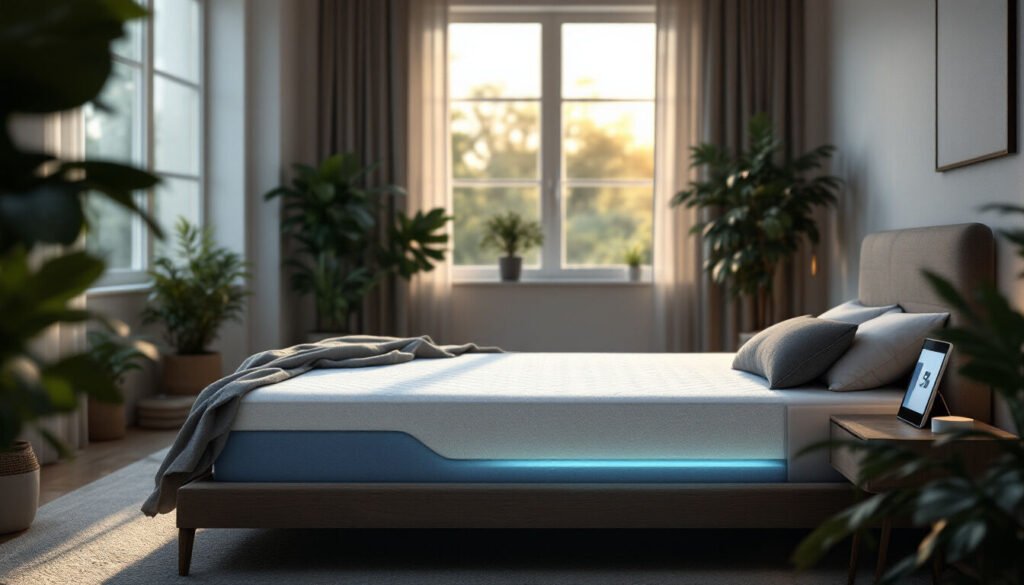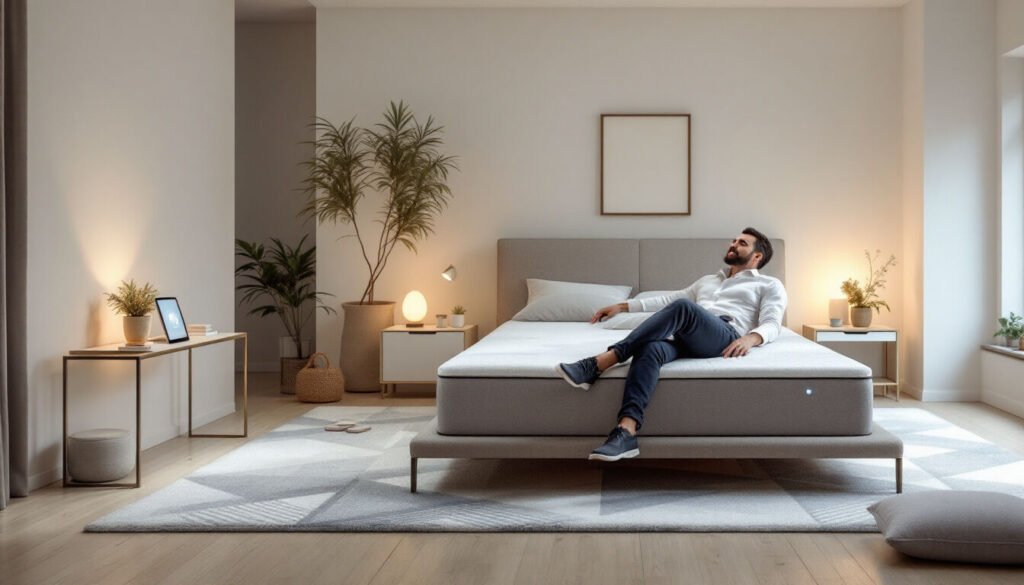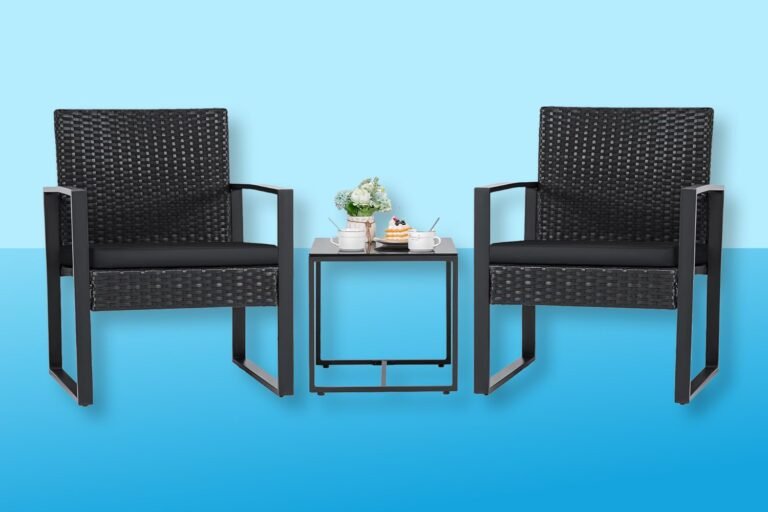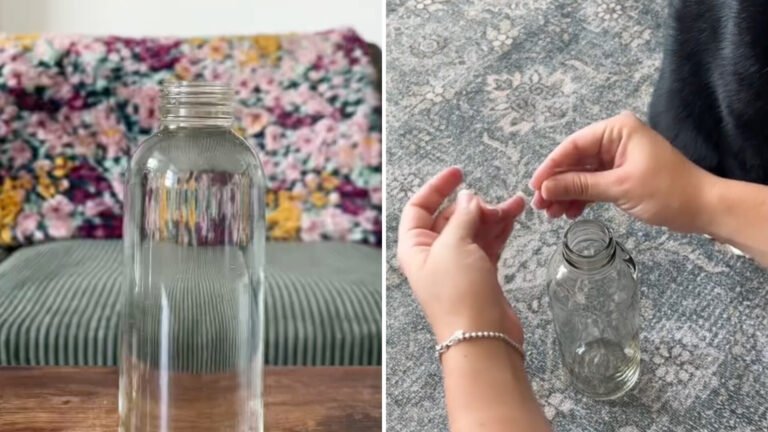Selecting the best mattresses 2025 is about more than just a good night’s sleep. The right mattress can transform your overall health, reduce stress on pressure points, and help you wake up more energized. With rapid advancements in memory foam, hybrid technology, and eco-friendly materials, 2025 promises an even wider range of sleep solutions for every sleeper type and budget.
A quality mattress supports spinal alignment, relieves back pain, and helps maintain deeper, more restorative rest. Mattresses like the Helix Midnight or Saatva Classic have introduced new sleep technologies that address cooling, motion isolation, and varied firmness levels. The market offers everything from organic latex hybrids to budget-friendly innerspring designs.
In this comprehensive guide, we’ll break down the latest mattress trends, highlight top-rated picks for different needs, and give you expert tips on how to choose the perfect sleep surface. You’ll also find insights on trial periods, warranties, and how to capitalize on sales events, ensuring you get the best value.
Up next, we’ll explore the evolving mattress landscape in 2025 and what it means for you.
1. Understanding the 2025 Mattress Landscape

Today’s mattress industry shows more innovation than ever. Consumers increasingly shop online, comparing models side-by-side, guided by extensive reviews and advanced trial options. According to Consumer Reports , demand has surged for eco-friendly and organic mattresses that minimize chemical off-gassing and prioritize natural materials.
To make a well-informed choice, consider factors like firmness, temperature regulation, and overall build quality. Heavier sleepers often need sturdy edge support and greater durability. Couples may appreciate strong motion isolation and minimal partner disturbance. Below are some core considerations:
- Firmness Compatibility: Each body type and sleep position thrives on specific firmness levels.
- Temperature Regulation: Cooling gels, breathable covers, and airflow channels address heat retention.
- Motion Isolation & Edge Support: These features prevent sinkage and nighttime disruptions.
- Durability & Warranty: Longer warranties can signal confidence in a mattress’s longevity.
Popular types include memory foam, innerspring, latex, and hybrids. Memory foam excels at contouring, innerspring at bounce, latex at responsiveness, and hybrids at balancing multiple features. Each caters to distinct preferences, so understanding these categories helps narrow your search.
With these fundamentals in mind, let’s uncover our top picks for 2025.
2. Best Mattresses 2025: Top Picks by Category
A. Best Memory Foam Mattress
Memory foam remains a favorite for its plush contouring and pressure relief. Leading brands include Nectar and Leesa Sapira. These foam layers adapt to your body, cradling joints while ensuring minimal motion transfer.
Key Features:
- Dense foam layers for balanced support
- Heat-dispersing gels to combat heat retention
- Medium-firm options that suit back and side sleepers
Pros:
- Excellent pressure relief for hips and shoulders
- Quiet, with almost zero partner disturbance
Cons:
- Some models trap heat if not engineered with cooling technology
- Less bounce for combination sleepers
These memory foam mattresses often range from $700 to $1,200 for a queen. They’re ideal for sleepers seeking deep compression and close body conformity.
If you enjoy a gentle hug from your bed, a memory foam mattress could be your best bet.
B. Best Latex Mattress
Latex mattresses (natural or synthetic) deliver excellent bounce and responsiveness. Natural latex, in particular, stands out for its eco-friendly credentials. Leading picks include Nolah Evolution and specialized organic lines with certifications like GOLS.
Benefits:
- Breathable, reducing heat accumulation
- Durable, with less sag over time
- Hypoallergenic and resistant to dust mites
Ideal For:
- All sleep positions needing a bouncy, resilient surface
- Shoppers prioritizing natural materials and reduced chemical use
Latex suits those seeking a more organic, buoyant feel with minimal sinkage.
C. Best Hybrid Mattress
Hybrids combine foam (or latex) layers with innerspring for enhanced support and adaptability. The Saatva Classic and Leesa Sapira Hybrid excel here, offering multiple firmness options and robust edge support.
Advantages:
- Balanced pressure relief and sturdy coils
- Better airflow than all-foam designs
Maintenance Tips:
- Rotate the mattress periodically for uniform wear
- Use a supportive bed frame to safeguard coils
Hybrids often suit couples or combination sleepers needing both cushioning and bounce.
D. Best Innerspring Mattress
Traditional innerspring designs rely on steel coil systems. Pocketed coils deliver improved motion isolation. WinkBed is a popular example, offering firm or plus-size variants for targeted back support.
Firmness Options: From plush Euro-tops to extra-firm builds, innersprings can cater to varied tastes. Prices often span $500 to $1,500 depending on coil count and comfort layers.
If you prefer a classic bounce and refreshing airflow, an innerspring fits well.
E. Best Organic Mattress
Eco-conscious shoppers appreciate mattresses that feature GOTS-certified cotton, GOLS-certified latex, or other natural fibers. These reduce chemical exposure and environmental impact. The Bear brand offers lines with organic covers and responsibly sourced foam.
Health & Environmental Benefits:
- Low VOC emissions, ideal for sensitive individuals
- Biodegradable or recyclable components
Choosing an organic mattress supports sustainability while ensuring restful, chemical-free sleep.
F. Best Luxury Mattress
High-end mattresses use premium materials like hand-tufted Euro-tops, gel-infused foams, and advanced coil systems. DreamCloud and WinkBed produce luxury lines with higher price tags but long-lasting comfort.
Highlights:
- Multiple comfort layers for hotel-style plushness
- Targeted support from specialized coil zones
Though luxurious models can exceed $2,000, they often excel in durability and overall performance. That investment can pay off if you prioritize top-tier craftsmanship.
Luxury picks are worth considering if you want the plushest materials and refined details.
G. Best Budget Mattress
Not every sleeper needs a high-end mattress. Affordable options like Brooklyn Bedding’s entry-level lines or basic innerspring models can deliver decent support at under $500 for a queen.
Pros:
- Lower cost, perfect for short-term or guest bedrooms
- Surprisingly comfortable if you shop carefully
Cons:
- Less robust foam density or coil construction
- Shorter warranties and potential for early sagging
With mindful selection, budget mattresses can still satisfy basic comfort needs.
H. Best Value Mattress
Value merges performance with affordability. A “value pick” might cost $600 to $1,000 but boasts quality foam, decent edge support, and brand reliability. Models like the Helix Midnight or Silk & Snow Hybrid often rank well here.
Value mattresses provide a sweet spot for those balancing cost and comfort longevity.
I. Best Cooling Mattress
Hot sleepers often struggle with foam that traps heat. Cooling mattresses integrate phase-change materials, gel layers, or coil systems for optimal airflow. Nolah Evolution and Saatva’s cooling hybrids stand out.
Recommended Materials:
- Open-cell memory foam
- Latex or latex-hybrid builds
- Perforated covers that enhance breathability
These designs aim to maintain a comfortable sleep temperature year-round.
J. Best Mattress for Back Pain Relief
Achieving neutral spinal alignment is vital for back pain sufferers. Medium-firm beds like the WinkBed or Helix Midnight Luxe cradle the lumbar zone while minimizing excess sinkage. According to the Sleep Health Journal , ergonomic design significantly alleviates chronic aches.
Look for targeted lumbar support and robust coil systems if back pain is a concern.
K. Best Firm Mattress
Heavier sleepers and those who rest on their back often favor firmer surfaces. Brooklyn Bedding Signature Hybrid offers a firm variant with reinforced edges and high-density foams.
A firm surface prevents hips from sinking too deeply, crucial for proper posture alignment.
L. Best Soft Mattress
Side sleepers appreciate softer models that cushion shoulders and hips. Nectar Premier or plush versions of Leesa Sapira can deliver plush top layers without losing support.
Soft mattresses deliver a “cloud-like” feel but ensure a supportive core to avoid back strain.
M. Best Mattress for Heavy People
Heavier sleepers require durable materials that resist sagging and provide consistent reinforcement. Brands like WinkBed Plus or Helix Midnight Luxe often incorporate thicker coil gauges or denser foams.
Focus on weight capacity and extra edge support if you’re above 230 lbs.
N. Best Mattress for Side Sleepers
Side sleepers need enhanced cushioning around shoulders and hips. Models like Nectar Premier or Bear Hybrid provide plush layers plus stable mid-lumbar support.
Look for moderate to high contouring to reduce pressure points on your side.
O. Best Mattress for Back Sleepers
Back sleepers thrive on moderate firmness. The Saatva Classic in Luxury Firm or the DreamCloud hybrid align the spine without feeling stiff.
Ensuring your lower back remains supported prevents morning stiffness and prolonged back issues.
P. Best Mattress for Stomach Sleepers
Stomach sleepers risk hyperextension of the spine if the bed is too soft. Firm or medium-firm surfaces like the Helix Dusk or Brooklyn Bedding Signature Hybrid can keep your midsection afloat.
Adequate firmness prevents hips from sinking, preserving spinal alignment for belly-sleepers.
Q. Best Mattress for Combination Sleepers
If you shift positions often, a mattress with good responsiveness and minimal motion transfer is key. Latex and hybrids typically excel here, such as the Nolah Evolution or Bear Hybrid.
Combination sleepers should choose a mattress that adapts smoothly across multiple angles.
R. Comparison Chart of Top Picks
Below is a quick reference of recommended brands, approximate prices, and standout features:
- Helix Midnight: ~\$1,100 (Queen); Medium-Firm; 100-Night Trial
- Saatva Classic: ~\$1,400 (Queen); Multiple Firmnesses; 180-Night Trial
- WinkBed: ~\$1,300 (Queen); Hybrid Innerspring; 120-Night Trial
- Nectar Premier: ~\$1,200 (Queen); Memory Foam; 365-Night Trial
- Brooklyn Bedding Signature Hybrid: ~\$999 (Queen); 3 Firmness Options; 120-Night Trial
Now, let’s delve into a comprehensive buying guide for 2025.
3. Comprehensive Buying Guide for 2025

A. Assessing Sleep Needs
Identifying your primary sleep position—side, back, stomach, or combination—helps narrow mattress firmness and construction. Body weight also impacts how much sinkage you’ll experience. Hot sleepers might emphasize cooling, while those with back pain need targeted lumbar support.
Start by listing your main concerns (e.g., pressure relief, temperature regulation) to streamline your choices.
B. Components of a High-Quality Mattress
Mattresses typically include a comfort layer (memory foam, latex, pillow-top) over a support core (coils or high-density foam). Some also incorporate transitional layers to soften the feel or boost responsiveness. Edge support ensures stability along the perimeter, while motion isolation keeps restless partners from disturbing each other.
Understanding these layers reveals why certain models excel at contouring, bounce, or cooling.
C. Sleep Trials, Warranties, and Return Policies
Many brands offer 100- to 365-night trials. This window is crucial to truly test comfort. According to Better Sleep Council , double-check warranty fine print for coverage on sag depth and manufacturing defects. Return policies vary—some might charge fees for returns or exchanges.
Always clarify the “fine print” to avoid surprise costs if the mattress isn’t a match.
D. Budgeting and Financing Options
A realistic budget acknowledges both upfront costs and any financing plans. Some online retailers split payments over months without interest. For mid-range mattresses, \$800–\$1,200 is typical, while luxury designs can top \$2,000.
Stick to your comfort range, but remember this is a long-term investment in your rest and well-being.
E. Environmental and Health Concerns
Eco-friendly mattress brands prioritize natural or recycled materials, avoiding fiberglass or high VOC components. Look for labels like GOTS (cotton) or GOLS (latex) and read up on manufacturing practices.
Hypoallergenic fabrics and foam can aid those with allergies or sensitive skin. Minimal off-gassing also indicates safer air quality.
Environmentally conscious sleepers can enjoy both comfort and peace of mind by choosing responsible brands.
F. Maximizing Sales, Promos, and Holiday Deals
Black Friday, Cyber Monday, and Memorial Day frequently see heavy discounts. Many direct-to-consumer retailers offer coupon codes year-round. Bundling mattress purchases with accessories—like pillows or bedding—can amplify savings.
Sign up for newsletters or follow brands on social media to catch limited-time promos.
G. Care and Maintenance Tips
Use a waterproof protector to shield from spills or dust mites. Rotate your mattress every few months to ensure even wear. Some models are flippable, but check the manufacturer’s guidelines first.
Regular upkeep extends a mattress’s lifespan and preserves optimal performance.
4. Additional Considerations

A. Online vs. In-Store Purchasing
Online shopping saves time and money, often with risk-free trials. According to CNET , in-store browsing allows physical testing but can limit brand variety. Some prefer touching mattresses before buying, while others rely on reviews and return policies.
Consider whether you value the in-person feel test or the convenience of doorstep delivery more.
B. Mattress-in-a-Box Popularity
Many 2025 mattresses come compressed in a box for easy shipping. These “bed-in-a-box” models typically expand within hours of unpacking. A mild off-gassing odor may arise but usually dissipates quickly.
Boxed mattresses offer portability and cost savings, ideal for modern living spaces.
C. Doctor and Sleep Expert Recommendations
If you suffer from persistent back or joint pain, consult healthcare professionals for advice. They might guide you toward medium-firm or high-support surfaces. Specialized mattresses exist for conditions like fibromyalgia or sciatica.
Professional input can save time and optimize comfort for specific medical needs.
D. Red Flags to Watch Out For
Be wary of unclear trial/warranty terms or overly hyped materials without certifications. Federal Trade Commission guidelines ( FTC ) caution consumers to research false eco-claims. Also note unrealistic “lifetime” warranties that might impose strict conditions or fees.
Stay informed to distinguish legitimate quality from marketing ploys.
Conclusion
In 2025, the search for the best mattresses 2025 involves weighing comfort, support, budget, and sleep position needs. Cutting-edge models like the Helix Midnight or Saatva Classic harness advanced foams, coil systems, and cooling tech to enhance rest. Shoppers can explore memory foam, latex, hybrids, innersprings, and organic lines, guided by brand reputation and personal sleep preferences.
Our category breakdown highlights top contenders for side, back, or stomach sleepers, as well as specialized options for those seeking a soft, firm, or budget-friendly solution. Ultimately, the right mattress boosts overall health and daily performance. Investing wisely today ensures restful nights for years to come.
Ready for deeper insights? Explore our guide to smart mattresses and discover how technology can refine your 2025 sleep even further.
Frequently Asked Questions
Generally, 7–10 years, though premium hybrids or latex models can endure longer with proper care. Check warranties for coverage against premature sagging.
If you desire foam’s contouring plus coil support, hybrids offer a balance. They often suit combo sleepers who shift positions and need moderate bounce.
Not necessarily. Luxury beds use higher-end materials but certain mid-range models provide excellent comfort. Focus on specs, reviews, and personal fit, not just price.
Yes. By supporting proper spinal alignment, the right mattress reduces pressure on discs and muscles. Medical research supports medium-firm surfaces for many back pain sufferers.
Side sleepers often pick softer, back sleepers go medium, and stomach sleepers typically prefer firmer. Yet, personal preference also matters.










